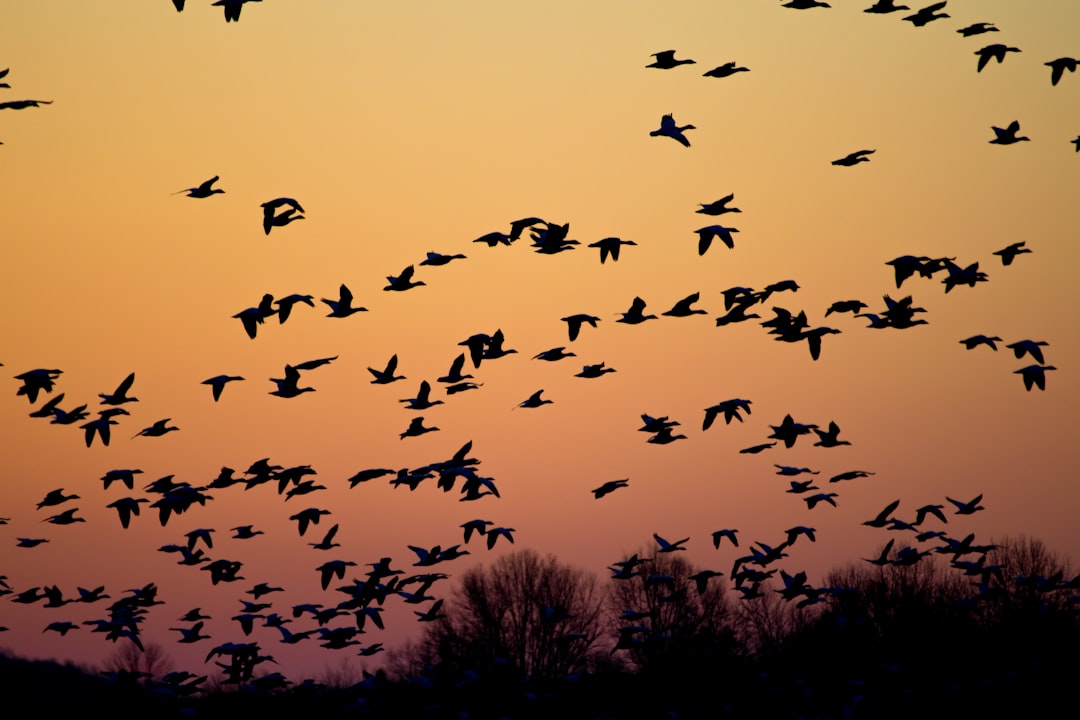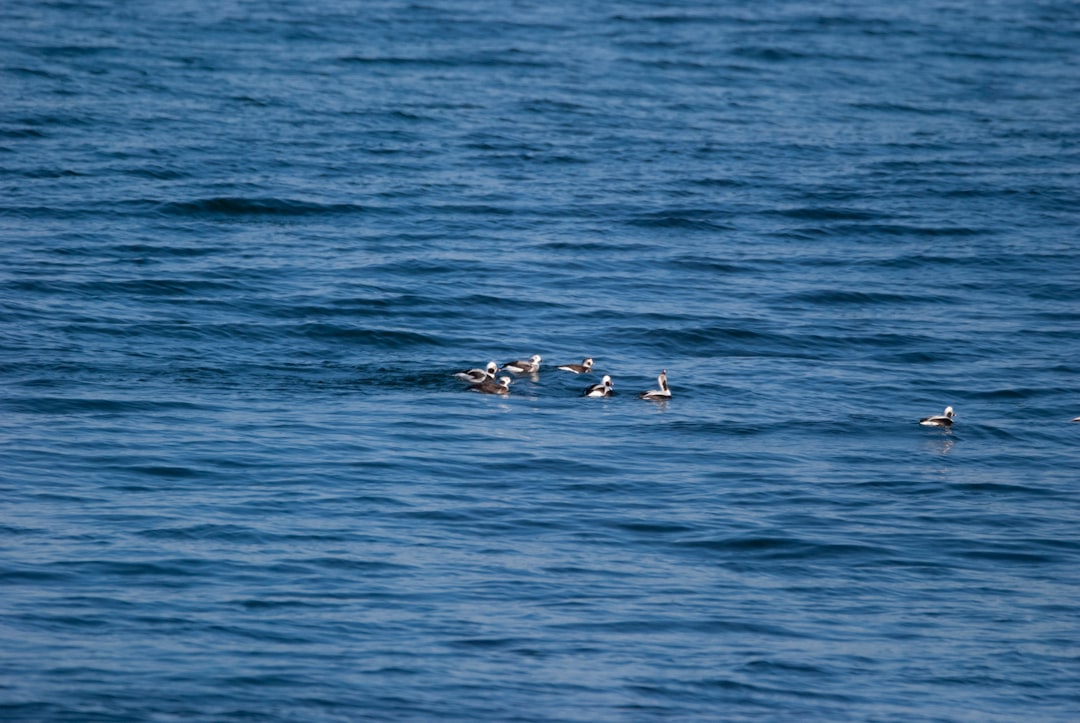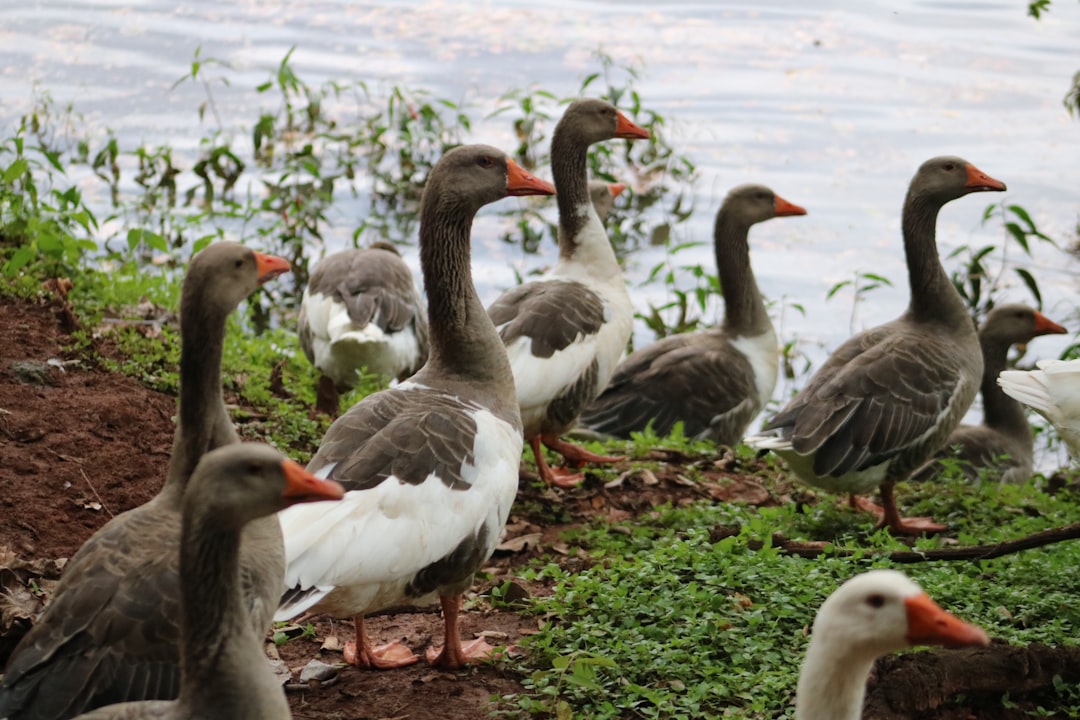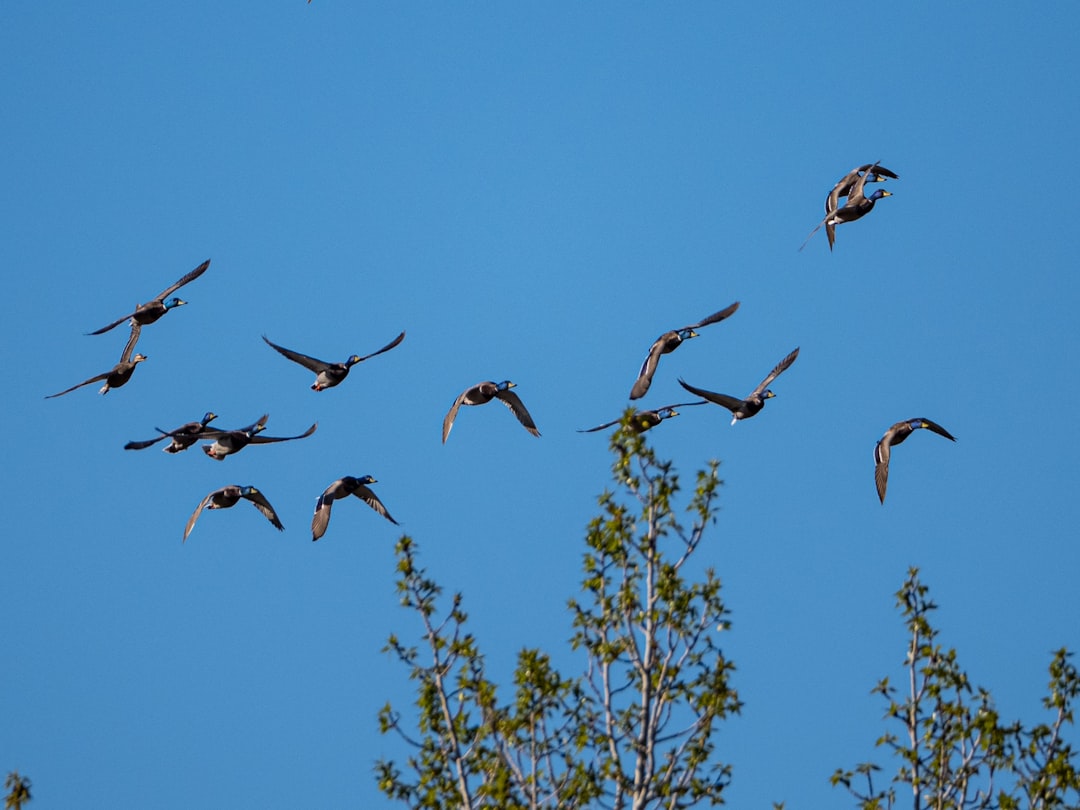Ducks are fascinating creatures that can be found all over the world. They are known for their colorful feathers, webbed feet, and unique quacking sounds.
One of the most interesting aspects of ducks is their tendency to migrate, or travel long distances in search of food and nesting sites.
But Do Ducks Migrate? And if so, where do they go and why? In this blog post, we will explore the topic of duck migration and answer some common questions about this fascinating behavior.
Duck migration refers to the seasonal movement of ducks, typically in search of food and suitable breeding sites. While not all duck species migrate, many do, with some traveling thousands of miles each year.
The exact routes and destinations vary depending on the species, but many ducks travel from their breeding grounds in the north to warmer areas in the south during the winter months.
Do Ducks Migrate?
It is worth noting that not all ducks migrate. Some species, such as the Muscovy duck and the Wood duck, are non-migratory and stay in their breeding grounds year-round.
Additionally, even among migratory species, there can be some variation in individual behavior. For example, some ducks may only travel short distances while others fly across continents.
Definition Of Migration In Ducks
Migration in ducks is a complex and fascinating phenomenon that has been studied by scientists for decades. It is believed that the urge to migrate is triggered by changes in daylight hours and other environmental cues.
During migration, ducks rely on their keen sense of direction, as well as landmarks like mountains and coastlines, to navigate their way across vast distances.
They also have the ability to fly at high altitudes, which allows them to avoid obstacles like mountains and storms.
Reasons Behind Migration
There are several reasons why ducks migrate. One of the main reasons is to find suitable breeding sites and nesting areas.
Many species of ducks breed in the Arctic and sub-Arctic regions during the summer months, where there is an abundance of food and open water.
However, as winter approaches and temperatures drop, these areas become frozen and inhospitable, prompting the ducks to travel south in search of more favorable conditions.
Another reason for migration is to find food. Ducks are omnivores and rely on a variety of foods including plants, seeds, insects, and small fish.
During the winter months, some areas may become depleted of these food sources, driving ducks to move on in search of new feeding grounds.
Types Of Ducks That Migrate

There are many species of ducks that migrate, including the Mallard, Northern Shoveler, and American Wigeon.
These ducks can travel thousands of miles each year and can be found in a variety of habitats, from wetlands to coastal areas.
The timing and duration of migration can also vary depending on the species and environmental conditions.
Duration And Distance Of Migration
The duration and distance of duck migration can vary greatly. Some ducks may only travel a few hundred miles while others fly thousands of miles each year.
The duration of migration also varies depending on the species and the environmental conditions they encounter along the way. In general, duck migration can last from a few weeks to several months.
Migration Patterns Of Ducks
Migration patterns of ducks can be influenced by a variety of factors, including weather patterns, food availability, and breeding cycles.
Some species of ducks migrate in large flocks, while others may travel alone or in small groups.
Spring Migration
Many ducks also undertake a spring migration. During this time, they return to their breeding grounds in the north, where they will mate and raise their young.
Spring migration can be more difficult for ducks than fall migration, as they must navigate more unpredictable weather conditions and may encounter fewer food sources along the way.
Fall Migration
Fall migration is typically easier for ducks than spring migration, as they have a better chance of finding food and suitable habitats along the way.
During fall migration, ducks travel from their breeding grounds in the north to warmer areas in the south, where they will spend the winter months.
Stopover Sites
During their migration, ducks may stop at various sites along the way to rest and refuel.
These stopover sites can be critical to their survival, as they allow the ducks to rest and feed before continuing on their journey. Wetlands, lakes, and rivers are all common stopover sites for migrating ducks.
Flyways Used By Ducks
Ducks typically follow established flyways during migration, which are routes that provide the best conditions for their survival.
The four main flyways in North America are the Atlantic, Mississippi, Central, and Pacific flyways.
These flyways provide ducks with access to food, water, and suitable habitats along the way.
How Do Ducks Know When And Where To Migrate?

Scientists believe that ducks use a combination of internal cues, such as changes in hormone levels, and external cues, such as the position of the sun and stars, to determine when and where to migrate.
They may also rely on their sense of smell to identify suitable habitats along their route. In addition, young ducks may learn migration routes from older birds through a process called social learning.
When Do Ducks Migrate?
The timing of duck migration varies depending on the species and their breeding grounds. In general, ducks begin to migrate in the fall when temperatures drop and food sources become scarce.
Spring migration typically occurs in March or April as ducks return to their breeding grounds in the north.
Some species of ducks may also undertake short migrations during the summer months in search of better feeding grounds.
Do All Ducks Migrate?
Not all ducks migrate. Some species, such as the Muscovy duck, are non-migratory and will remain in their breeding grounds year-round.
Other ducks may only travel short distances during the summer months in search of better feeding grounds.
However, for many species of ducks, migration is a necessary part of their survival strategy.
By traveling to areas with more favorable conditions and abundant food sources, they are able to survive harsh winter months and successfully breed in the spring.
Where Do Ducks Migrate?
The destination of duck migration varies depending on the species. Some ducks fly to the southern United States or Mexico, while others may travel as far as South America, Europe, or Asia.
Many ducks also migrate to wetlands and other areas with abundant food sources where they can rest and refuel before continuing their journey.
Some well-known migration destinations for ducks include the Gulf of Mexico, the Great Lakes region, and various wetlands along the Pacific coast.
How Far Do Ducks Migrate?
The distance that ducks migrate also varies depending on the species. Some ducks may travel only a few hundred miles, while others can cover thousands of miles during their migration.
For example, the Arctic Tern holds the record for the longest migratory journey of any bird, traveling up to 44,000 miles round trip between its breeding grounds in the Arctic and its wintering grounds in Antarctica.
Why Do Some Ducks Not Migrate?

Some ducks do not migrate because they have adapted to living in areas with mild temperatures and abundant food sources year-round.
For example, Muscovy ducks are often found in tropical regions where the weather stays warm and there is plenty of food available all year.
Other non-migratory ducks may live in areas with reliable sources of water and food, such as urban parks or agricultural fields.
These ducks do not need to undertake long migrations since their basic needs are met in their home range.
Do UK Ducks Migrate?
As for ducks in the UK, not all of them migrate. Some species, such as mallards and mute swans, are resident birds and do not undertake long-distance migrations.
However, other species like the teal and wigeon do migrate to the UK during the winter months from their breeding grounds in northern Europe and Russia.
These migratory ducks can be seen in wetlands, estuaries, and coastal areas across the UK during this time.
It’s important to note that duck migration patterns can vary from year to year depending on factors such as weather conditions and food availability.
When Do Ducks Migrate North?
Ducks start migrating north in the spring as they return to their breeding grounds. The timing of this migration can vary depending on the species and their wintering location.
Some ducks may start their journey back north as early as February, while others may not begin until April or May.
During this time, ducks may stop at wetlands and other areas with abundant food sources to rest and refuel before continuing their journey.
Once they reach their breeding grounds, ducks will mate and begin raising their young before heading back south in the fall.
Do Ducks Migrate By Flying?

Yes, ducks migrate by flying. They are able to cover vast distances using their powerful wings and impressive navigational abilities.
During migration, ducks may fly at altitudes of up to 10,000 feet and travel at speeds of up to 60 miles per hour.
To conserve energy during their journey, ducks often fly in V-shaped formations that allow them to take advantage of the air currents created by the birds in front of them.
Factors That Influence Duck Migration
While duck migration is a natural and necessary process, there are several factors that can influence their journey.
Climate change, for example, can alter the timing and duration of migration as well as impact the availability of food and habitat along the way.
Habitat loss due to human activity is another major threat to ducks and their migratory patterns.
Wetlands, which are critical stopover sites for migrating ducks, are often drained or developed which affects their ability to rest and refuel during migration.
Challenges Faced By Migrating Ducks
During migration, ducks face many challenges, including extreme weather conditions, predation, and human interference.
Here is a list of challenges faced by ducks during migration:
Climate Change
Climate change is another challenge that migrating ducks face. As temperatures continue to rise, ducks may need to adjust their migration patterns to find suitable habitats and food sources.
This can lead to shorter or longer migration distances, which may impact their ability to successfully breed and raise young.
Additionally, changes in weather patterns can affect the timing of migration, making it more difficult for ducks to predict when they need to start their journey.
Habitat Loss
Habitat loss is another major challenge for migrating ducks. Wetland habitats are critical for rest and refueling during migration, but they are also under threat from human activity.
The draining and development of wetlands, pollution, and invasive species all contribute to the loss of these important habitats.
Conservation efforts that aim to protect and restore wetland habitats are crucial for the survival of migrating duck populations.
Hunting
Hunting is perhaps the most significant challenge faced by migrating ducks. While regulated hunting can be sustainable, illegal hunting and poaching are major threats to duck populations.
Migrating ducks are often targeted by hunters, who shoot them as they rest and refuel at wetland stopover sites.
In some areas, the demand for duck meat and feathers drives illegal hunting, which can have devastating consequences for migrating populations.
Predators
Predators are also a challenge faced by migrating ducks.
Birds of prey such as hawks and eagles may target ducks during migration, and other predators like foxes and raccoons may prey on duck eggs and young once they reach their breeding grounds.
Last Talk: Do Ducks Migrate?
Duck migration is an incredible natural phenomenon that showcases the impressive abilities of these birds.
However, they face numerous challenges during their journey, including climate change, habitat loss, hunting, and predation.
The conservation of wetland habitats is crucial for the survival of migrating duck populations and requires efforts to protect and restore these critical ecosystems.
Additionally, regulations on hunting must be enforced to ensure sustainable practices and prevent illegal hunting and poaching from further threatening duck populations.
As we continue to learn more about duck migration patterns and the threats they face, it is important to take action towards protecting these beautiful birds for future generations to enjoy.
FAQs
Do All Ducks Migrate?
No, not all ducks migrate. Some species of ducks are resident birds that stay in one place year-round.
When Do Ducks Migrate?
Ducks typically migrate in the fall and spring, with some species starting their journey as early as August and others as late as December.
How Far Do Ducks Migrate?
The distance ducks migrate varies by species, with some traveling only a few hundred miles and others traveling thousands of miles.
Why Do Ducks Migrate?
Ducks migrate in search of food and better breeding grounds. As the seasons change, they move to areas with more abundant food sources and suitable nesting sites.
Are Migrating Ducks in Danger?
Yes, migrating ducks face many challenges including climate change, habitat loss, hunting, and predation. It’s important to protect their habitats and regulate hunting to ensure their survival.




